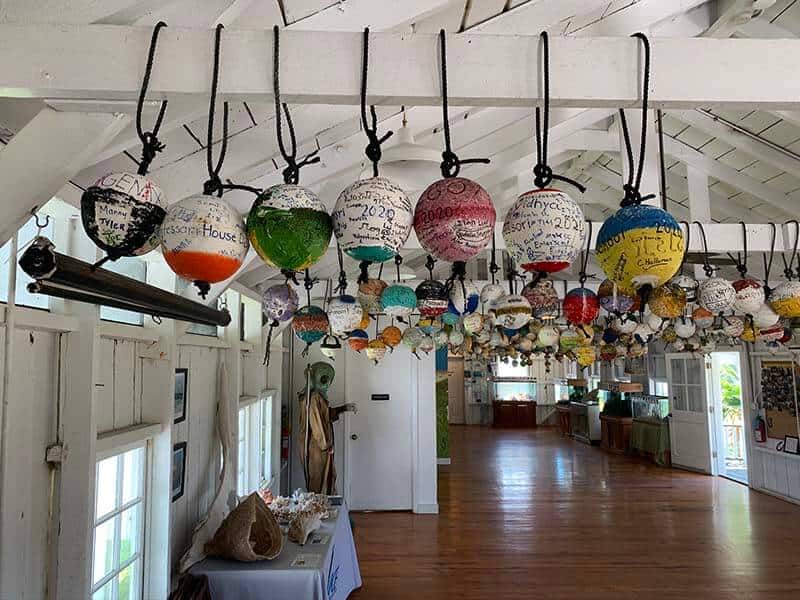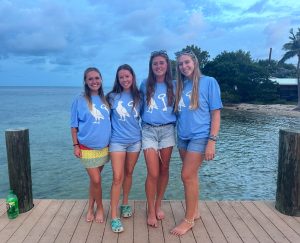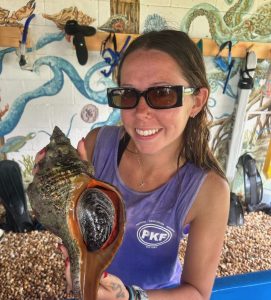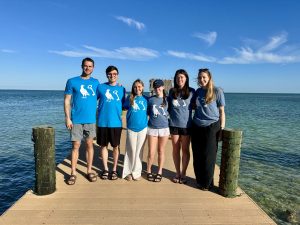Here on Pigeon Key, the oldest standing building is the Section Gang Quarters which was built in 1909. Historically, the Section Gang Quarters housed 64 men at once during the construction of the Florida East Coast Extension and Seven Mile Bridge, a railway built by Henry Morrison Flagler starting in the early 1900’s. During this time, you could find up to 400 men living on Pigeon Key. Each bunk house was filled to the max and even housed men in the rafters. Visiting the island today, one could only imagine how the men lived in those tight knit conditions: compacted, covered with kerosene drenched clothing (to keep the mosquitos at bay) , and lacking modern day deodorant after a hard day’s work.
Nowadays, the Section Gang Quarters serves as a classroom for our Marine Science groups that visit throughout the education season. Our rafters are indeed worker free but, as a replacement, you can find our unorthodox interior decoration. Buoys are used as anchored flotation devices to help with navigation around reefs, seagrass beds, or other marine habitats as well as to mark the spot lobster or crab traps are set. They are composed of materials ranging from iron to plastics and Styrofoam; and when the buoys become detached from their anchor, they create marine debris. When this occurs in the Florida Keys, they float to nearby shores, and this is how Pigeon Key started our collection.Instead of tossing the buoys in the garbage and inevitably landfills, our Education Staff upcycles the buoys to serve a new purpose.
Ever since 2010, washed up buoys have been transformed into memorabilia for educational groups to leave their mark on Pigeon Key. Buoys are collected by our staff, washed and stored, and as a farewell to our group, the students sign their names on the buoys to have them hung up in the rafters to be a part of Pigeon Key history. The initiative has become a highlight of students’ time on the island and one that is very beneficial to the environment. Over 250 buoys have been collected and signed with many more to come as our education seasons continue.
Written by Randy Thomas, Education Intern 2020




